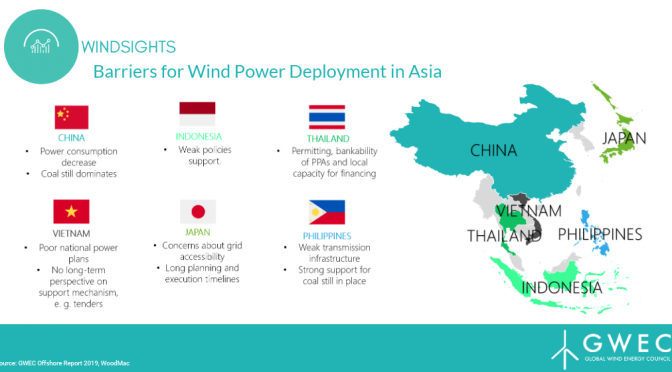The global COVID-19 outbreak has impacted the health and wellbeing of millions of people, creating unprecedented economic and social challenges, disrupting business and supply chain operations and affecting 2.7 billion workers globally. Governments across the world are now rising to the challenge of preparing a roadmap to economic recovery, with an excess of (USD) $10 trillion in stimulus packages already launched or announced globally. This is a crucial time for governments and international financial institutions not to lose sight of our international climate goals.
It is only through the lens of “re-building better” for the future, investing in low-carbon technologies and accelerating the energy transition that we can ensure lasting and sustainable economic recovery. A global green recovery is the only pathway to a more resilient future. And in this time of crisis, the wind industry has a vital role to play as a strategic partner for governments to stimulate economic growth and enable job creation while upholding emissions targets to meet our climate goals.
In May, GWEC alongside signatories representing all the major wind industry corporates and associations globally released a statement urging governments across the world to put the wind industry at the centre of their economic recovery plans. This is particularly crucial for countries in Asia, where rising populations, GDP and energy demand are creating an urgent need to rapidly scale-up and renew the region’s infrastructure to create energy security and support economic growth.
According to a new report published by leading economists at Oxford, clean energy infrastructure construction creates double the jobs per $1 million spent compared to fossil fuel projects. In China, the largest wind and solar power market in the world, there are already over 3.64 million renewable energy jobs as of 2018, and with significant growth forecasted in this market, this number will only continue to grow. Overall, Asia accounts for nearly half of global wind power employment with 620,000 jobs across the region.
In South East Asia where coal is still the dominant source of energy, more and more governments are realising the benefits of wind and other renewables as a cost-competitive and reliable energy source to fulfil the region’s ballooning energy demand while shifting away from the harmful price fluctuations of imported coal. This not only supports greater energy security in the region, but shields economies against price disruptions which can significantly impact GDPs and opportunities for growth.
Offshore wind is also growing in Asia, and the industry’s economic benefits will be significant for countries with large coastal populations. For example, an emerging offshore wind market like Taiwan is on-track to generate 20,000 local jobs and nearly US$30 billion in inward investment by installing 5.5 GW by 2025, which will be crucial in revitalising its port and other infrastructure. In Japan, $46 to 55 billion worth of direct investment for around 10 GW of offshore wind infrastructure is expected by 2030.
The lasting impacts of COVID-19 and the pace of the global economic recovery will depend on the actions that we all take in the coming months. This is a crucial time for governments in Asia and globally to leverage the wind industry’s potential to generate massive capital investment, create skilled jobs and community benefits and renew critical infrastructure to enable a lasting and sustainable economic recovery.
Learn more about how wind power can contribute to a green recovery in our statement here.

Liming Qiao, Asia Director, GWEC


